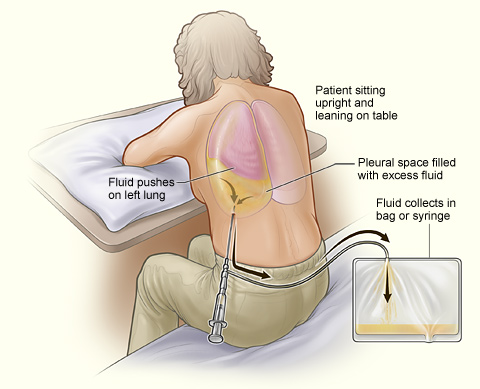What To Expect During Thoracentesis
Thoracentesis is done at a doctor's office or
hospital. The entire procedure (including preparation) usually takes 10 to 15
minutes, but the needle or tube is in your chest for only a few minutes during
that time. If there's a lot of fluid, the procedure may take up to 45 minutes.
You will sit on the edge of a chair or exam table,
lean forward, and rest your arms on a table. Your doctor will tell you not to
move, cough, or breathe deeply once the procedure begins.
He or she cleans the area of your skin where the
needle or tube will be inserted and injects medicine to numb the area. You may
feel some stinging at this time.
Your doctor then inserts the needle or tube between
your ribs and into the pleural space (the area between the lungs and chest
wall). You may feel some discomfort and pressure at this time. Your doctor may
use ultrasound to find the right place to insert the needle or tube.
(Ultrasound uses sound waves to create images of your lungs.)
He or she then draws out the excess fluid around
your lungs using the needle or tube. You may feel like coughing, and you may
feel some chest pain. If a lot of fluid is removed, your lungs will have more
room to fill with air as the fluid is drawn out. This can make it easier to
breathe.
Thoracentesis

The illustration shows a person
having thoracentesis. The person sits upright and leans on a table. Excess
fluid from the pleural space is drained into a bag.
Once the fluid is removed, your doctor takes out the
needle or tube. A small bandage is placed on the site where the needle or tube
was inserted. |

